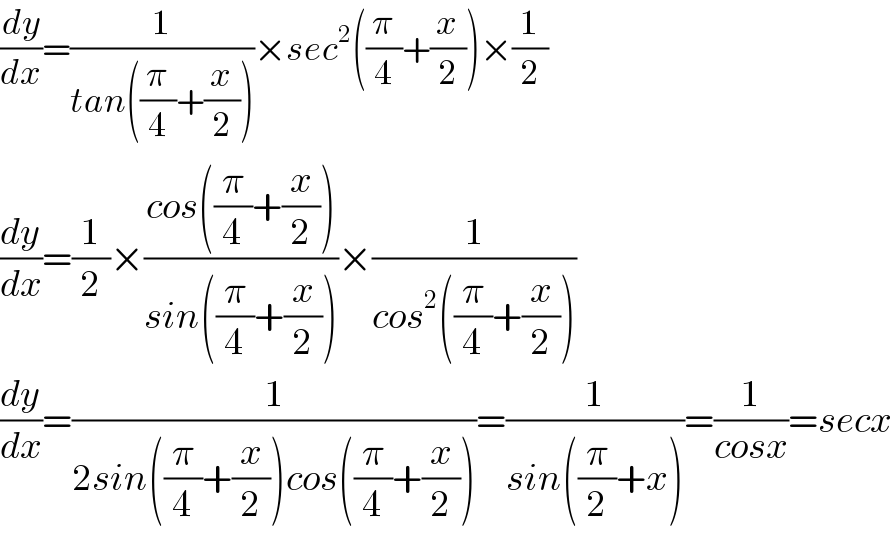
Question and Answers Forum
Question Number 44622 by mondodotto@gmail.com last updated on 02/Oct/18
![if y=ln[tan((𝛑/4)+(x/2))] show that (dy/dx)=secx](Q44622.png)
Answered by tanmay.chaudhury50@gmail.com last updated on 02/Oct/18

| ||
Question and Answers Forum | ||
Question Number 44622 by mondodotto@gmail.com last updated on 02/Oct/18 | ||
![if y=ln[tan((𝛑/4)+(x/2))] show that (dy/dx)=secx](Q44622.png) | ||
Answered by tanmay.chaudhury50@gmail.com last updated on 02/Oct/18 | ||
 | ||
| ||